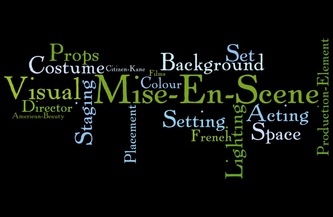Note: This blog is part of the academic material prepared for Semester 5 TYBA students of Maharaja Krishnakumarsinhji Bhavnagar University (MKBU), as per the revised NEP syllabus for the academic year 2025–26.
Course Title: A Study of Literary Terms
Prescribed Textbook: A Glossary of Literary Terms by M.H. Abrams, 11th Edition (Cengage Learning Publication)
The PDF of the 10th edition is provided here for reference : A Glossary of Literary Terms, 10th Ed.
Mise-en-scène
What Does "Mise-en-scène" Mean?:
The term mise-en-scène (pronounced meez-on-sen) is French and literally means “putting on stage.” In simple terms, it refers to everything you see on the screen or stage—all the visual elements that create the mood, setting, and style of a scene.
It’s like the stage manager of the visual world.
Elements of Mise-en-scène:
1. Setting and Props – Where is the scene happening? Is it a village, a palace, or a dark forest? What objects are used?
2. Costumes and Makeup – What are the characters wearing? Does it match their personality, time period, or situation?
3. Lighting – Is the scene bright and colorful or dark and shadowy? Lighting sets the mood.
4. Actors’ Movement and Expression – How do the characters move? What emotions do they show?
5. Composition – How are things arranged in the frame? What is in the center or background?
Why is Mise-en-scène Important?:
Mise-en-scène helps the director tell the story visually. Even without words, we can understand:
- The time and place
- The mood and atmosphere
- The character’s emotions
- Symbolic meanings
It’s a powerful way to “show” rather than “tell.”
Examples:
1. Taarak Mehta Ka Ooltah Chashmah (TMKOC)
In TMKOC, the colorful set of Gokuldham society is a part of mise-en-scène. Each flat reflects the character’s culture and lifestyle. The costumes, like Jethalal’s kurta-pajama or Babita’s modern outfits, also reflect personality. The bright lighting and cheerful setting add to the comedy and light mood of the show.
5. Videos for references:
Mise-en-scène may sound fancy, but it’s all about the visual storytelling. Next time you watch a movie or a play, notice the colors, lights, props, and how everything looks. That’s mise-en-scène working its magic!

No comments:
Post a Comment